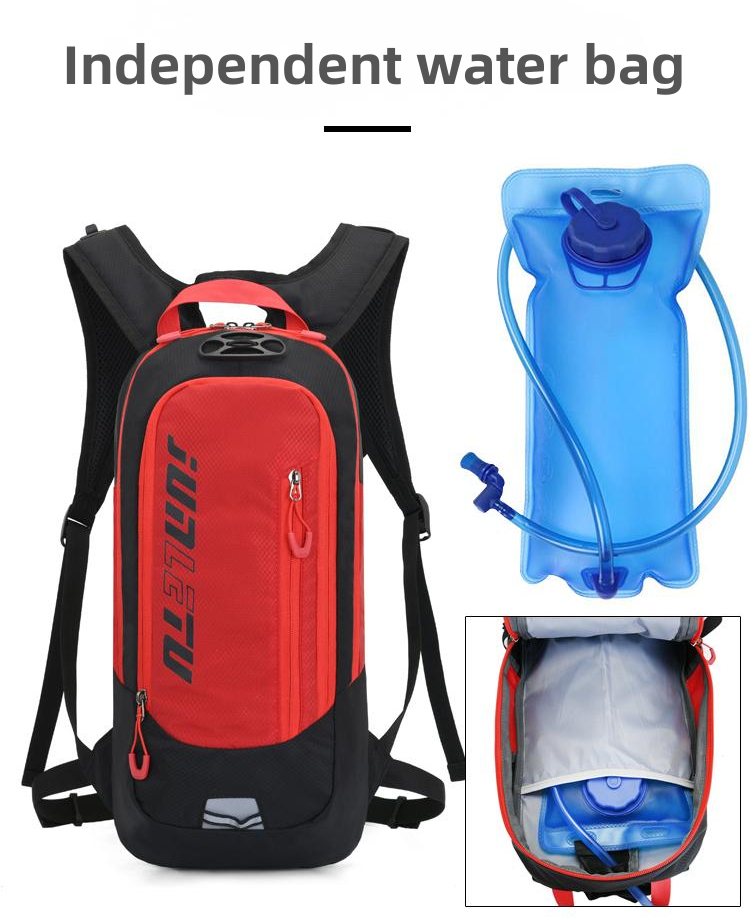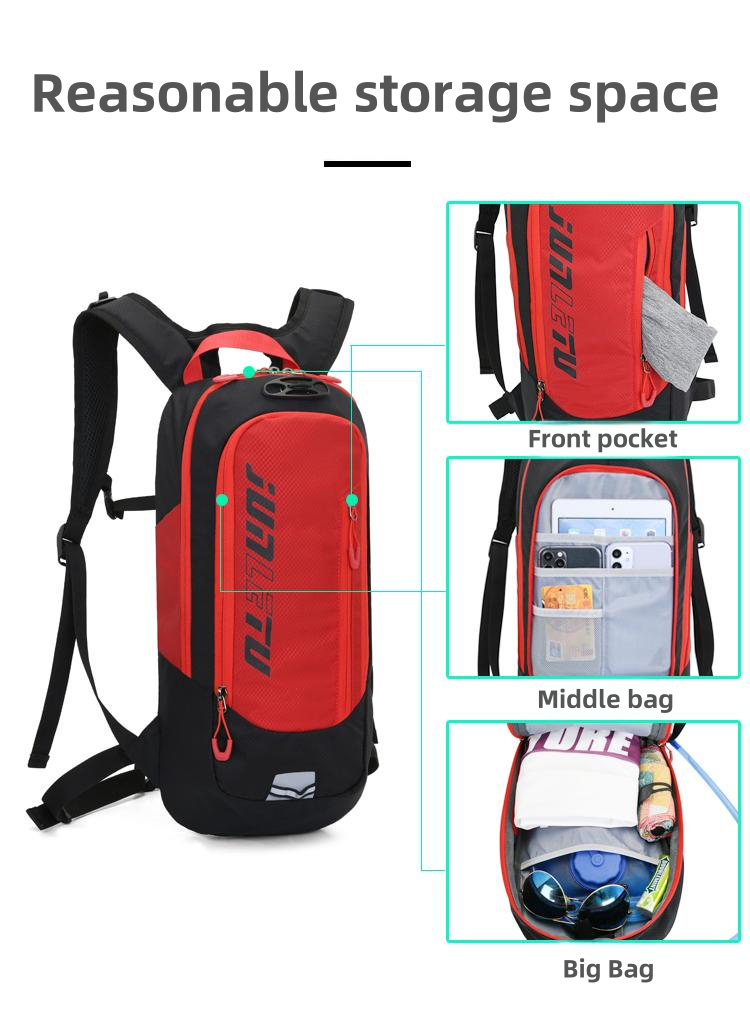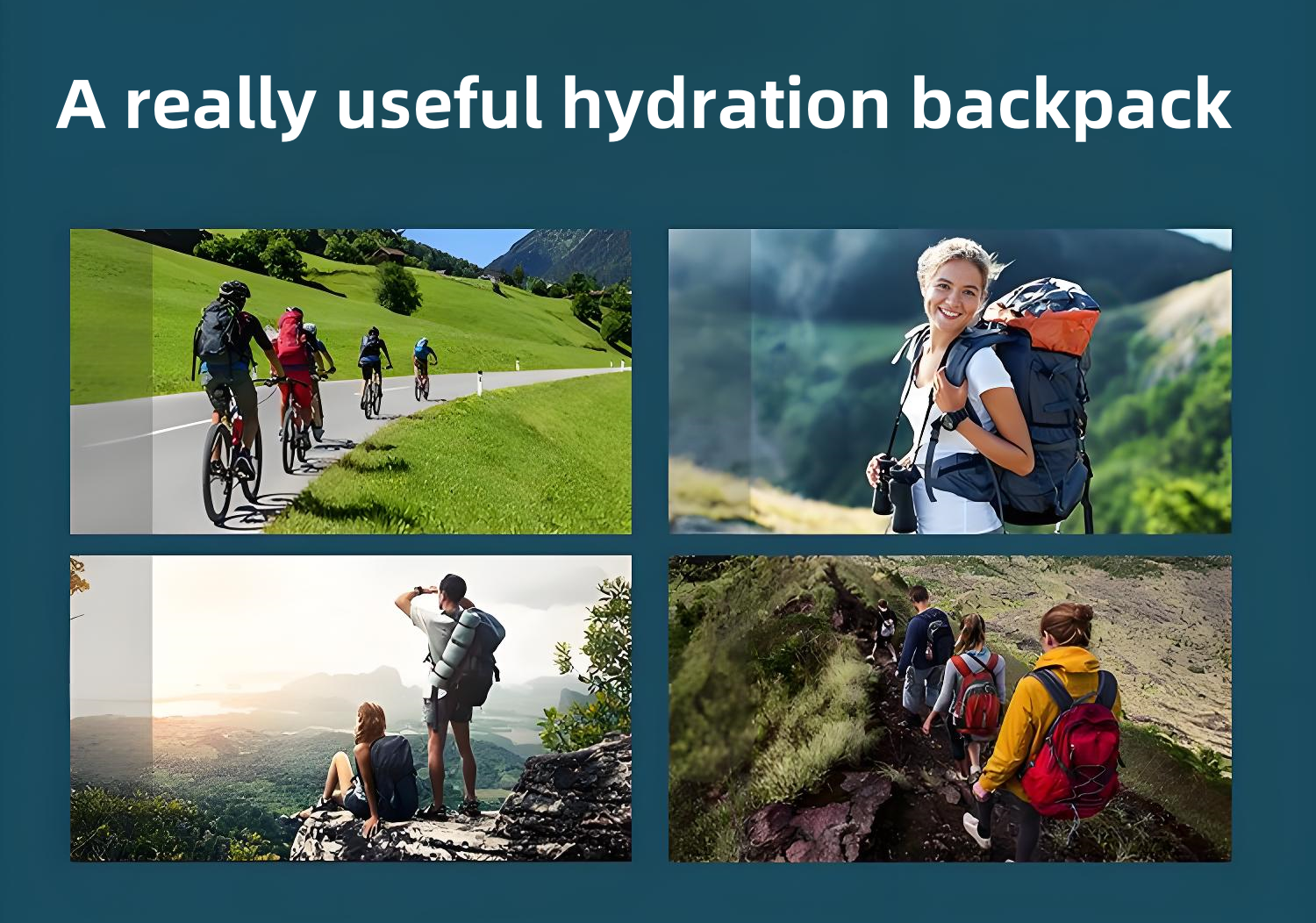As an avid outdoor enthusiast, I’ve spent countless weekends hiking, cycling, and running through trails, mountains, and even urban parks. One piece of gear that’s become a game-changer for me is the hydration backpack. It’s not just a fancy water bottle—it’s a practical, hands-free way to stay hydrated during intense activities. But the question I often hear from friends and fellow adventurers is, what sports are hydration backpacks actually suitable for? Having used them across various activities and chatted with others in the community, I’ve got a pretty good sense of where they shine and where they might fall short. In this article, I’ll share my experiences, insights, and some hard-earned tips to help you figure out if a hydration backpack is the right fit for your favorite sports.

Understanding Hydration Backpacks
Before diving into the sports, let’s clarify what a hydration backpack is. Essentially, it’s a lightweight backpack with a built-in water reservoir (or bladder) and a drinking tube that lets you sip water without stopping or using your hands. Most models also have pockets for snacks, phones, or other essentials, making them a versatile piece of gear. Unlike traditional water bottles, hydration backpacks distribute weight evenly across your back, which is a lifesaver during long, demanding activities.
I first got into hydration backpacks during a scorching summer hike when carrying multiple water bottles felt like lugging around bricks. The convenience of sipping water through a tube while keeping my hands free was a revelation. But not every sport benefits equally from this setup, so let’s break it down by activity, with some pros, cons, and real-world insights.
Sports Where Hydration Backpacks Shine
1. Trail Running
Trail running is where hydration backpacks truly come into their own. When you’re pounding through uneven terrain, stopping to grab a water bottle from your bag or belt can throw off your rhythm or even lead to a stumble. With a hydration backpack, I can sip water on the go without breaking stride. The snug fit of most running-specific models, like vests with adjustable straps, keeps the pack stable even during fast descents.
Why It Works: Trail runs often last hours, and remote routes mean no water fountains. A 1.5-2L reservoir is usually enough for runs up to 20 miles, depending on the weather. Plus, the extra pockets are perfect for energy gels or a lightweight jacket.
My Experience: During a 15-mile trail run last spring, my hydration vest saved the day. I carried 1.5L of water, some snacks, and my phone, and the pack barely bounced. The only downside? Refilling the reservoir at a stream took some finesse.
Tip: Look for running-specific vests with breathable mesh and a capacity of 5-12L for shorter runs. For ultra-marathons, consider 12-20L packs with room for extra gear.
2. Hiking and Backpacking
Hiking, especially multi-hour treks or overnight backpacking trips, is another sport where hydration backpacks excel. When you’re climbing steep trails or covering long distances, easy access to water is critical. I’ve found that hydration backpacks with 2-3L reservoirs are ideal for day hikes, while larger packs (20-30L) work for multi-day adventures where you need space for camping gear.
Why It Works: The hands-free sipping system lets you stay hydrated without pausing, and the pack’s storage capacity means you can carry food, first-aid kits, and layers. According to REI, staying hydrated on hikes reduces fatigue and improves endurance.
My Experience: On a two-day backpacking trip in the mountains, my 25L hydration pack held a 3L reservoir, sleeping bag, and food. The drinking tube froze overnight, though, so I learned to empty it before bed in cold weather.
Tip: Choose a pack with a wide-mouth reservoir for easy refilling and cleaning. For backpacking, ensure the pack has enough capacity for your gear and a sturdy frame for heavier loads.

3. Cycling (Mountain and Road)
Cycling, whether on rugged mountain trails or long road rides, is another great match for hydration backpacks. When you’re pedaling for hours, reaching for a bottle cage can be awkward, especially on technical trails. A hydration backpack lets you sip water without taking your hands off the handlebars.
Why It Works: Cyclists need frequent hydration, especially on hot days or long climbs. A 1-2L reservoir is usually sufficient for rides under 3 hours, and the pack’s pockets can hold tools, spare tubes, or snacks.
My Experience: During a 50-mile road ride, my 10L hydration pack kept me hydrated and carried my repair kit. On mountain trails, though, I noticed sweat buildup under the pack, so ventilation is key.
Tip: Opt for a low-profile pack (5-10L) to minimize drag. Look for models with chest straps to prevent bouncing and breathable back panels to reduce sweating.
4. Skiing and Snowboarding
For winter sports like skiing and snowboarding, hydration backpacks are surprisingly useful, especially for backcountry or all-day resort sessions. Staying hydrated in cold, dry environments is just as important as in hot weather, but it’s easy to forget when you’re bundled up.
Why It Works: The drinking tube lets you sip without removing gloves or stopping, and the pack can carry avalanche gear, snacks, or extra layers. Insulated tubes prevent freezing in subzero temps.
My Experience: On a backcountry ski trip, my 20L hydration pack held a 2L reservoir, shovel, and probe. The insulated tube worked well, but I had to blow air back into the reservoir after sipping to prevent ice buildup.
Tip: Choose a pack with an insulated drinking tube and a reservoir cover. For backcountry, ensure it has enough space for safety gear.
5. Adventure Racing and Ultra-Endurance Events
Adventure races, ultra-marathons, or triathlons often combine running, cycling, and other activities over long distances. Hydration backpacks are a staple for these events, providing water and storage for nutrition and gear.
Why It Works: These events can last 6-24 hours or more, requiring constant hydration and fuel. A 10-20L pack with a 2-3L reservoir can carry enough water and supplies for extended periods.
My Experience: A friend who competed in a 12-hour adventure race swore by her 15L hydration vest. It carried water, energy bars, and a headlamp, though she wished it had more reflective strips for nighttime visibility.
Tip: Look for packs with high-visibility elements and multiple compartments for organization. Test the fit during long training sessions to avoid chafing.

Sports Where Hydration Backpacks Are Less Ideal
While hydration backpacks are versatile, they’re not perfect for every sport. Here are a few where they might not be the best choice:
1. Gym Workouts or Indoor Sports
For activities like weightlifting, yoga, or basketball, a hydration backpack is overkill. You’re usually near water fountains or can carry a bottle. Wearing a backpack during these sports can also feel bulky and restrictive.
My Experience: I tried wearing a hydration vest during a CrossFit session, and it got in the way during burpees and kettlebell swings. A reusable bottle was much simpler.
2. Swimming or Water Sports
While it seems counterintuitive, hydration is important for swimming or kayaking, but backpacks aren’t practical here. They’re not designed to be submerged, and the added weight can hinder performance.
My Experience: On a kayaking trip, I used a waterproof dry bag with a water bottle instead. It was easier to access and didn’t risk damaging a hydration reservoir.
3. Short, Low-Intensity Activities
For casual walks or short jogs (under 30 minutes), a hydration backpack might be unnecessary. A handheld bottle or waist belt is lighter and less cumbersome.
My Experience: During a 3-mile neighborhood run, my hydration vest felt like overkill. A simple water bottle was enough for such a short distance.
Choosing the Right Hydration Backpack: A Buyer’s Guide
To help you pick the perfect hydration backpack for your sport, I’ve compiled a table of key factors to consider, based on my trials and research from OutdoorGearLab.
| Feature | Recommendation | Why It Matters |
|---|---|---|
| Reservoir Capacity | 1-3L, depending on activity duration | Ensures enough water without excess weight |
| Pack Capacity | 5-12L for running/cycling, 20-30L for hiking/backpacking | Matches gear needs for your sport |
| Fit and Comfort | Adjustable chest/waist straps, breathable mesh | Prevents bouncing and reduces sweat |
| Material | Durable nylon or polyester, BPA-free reservoir | Withstands wear and ensures safe drinking |
| Drinking Tube | Insulated for winter, quick-disconnect for cleaning | Prevents freezing and simplifies maintenance |
| Storage | Multiple pockets for essentials | Keeps gear organized and accessible |
My Buying Tips:
Try Before You Buy: If possible, test the fit in a store, especially for running or cycling, to ensure it doesn’t bounce.
Check Reservoir Quality: Look for leak-proof designs with wide openings for easy cleaning. CamelBak recommends cleaning reservoirs after every use to prevent mold.
Consider Climate: For hot climates, prioritize ventilation; for cold, ensure insulation for the tube and reservoir.
Read Reviews: User feedback on e-commerce sites often highlights issues like chafing or reservoir leaks.
Using and Maintaining Your Hydration Backpack
To get the most out of your hydration backpack, proper use and care are key. Here’s what I’ve learned:
Test the Fit: Adjust straps to ensure a snug, bounce-free fit. For running, the pack should sit high on your back.
Clean Regularly: Rinse the reservoir with warm water and mild soap after each use. Use a cleaning brush for the tube. Dry thoroughly to prevent mold.
Prevent Freezing: In winter, blow air back into the reservoir after sipping to clear the tube. Store the reservoir empty in cold weather.
Avoid Sugary Drinks: Stick to water or electrolyte mixes designed for reservoirs to avoid sticky residue.
Store Properly: Keep the reservoir and pack in a cool, dry place, with the reservoir fully open to air-dry.

Real-World Feedback: What Users Say
To give you a broader perspective, I checked out user reviews on social platforms and e-commerce sites. Here’s a snapshot:
Positive Feedback: A trail runner said, “My hydration vest is a lifesaver on long runs—no more fumbling with bottles!” A hiker noted, “The 3L reservoir lasted a full day, and the pack held all my gear.”
Negative Feedback: One cyclist complained, “The pack got sweaty on long rides—better ventilation would help.” Another user mentioned, “The reservoir leaked after a few months, so quality matters.”
These align with my own findings: hydration backpacks are fantastic for certain sports, but fit, ventilation, and reservoir quality can make or break the experience.
My Final Thoughts
After years of using hydration backpacks across different sports, I can confidently say they’re incredibly practical for activities like trail running, hiking, cycling, skiing, and adventure racing. The hands-free hydration and extra storage make long, demanding sessions more manageable, whether you’re scaling a mountain or bombing down a trail. That said, they’re not a one-size-fits-all solution—indoor sports, water-based activities, or short workouts are better served by simpler options like bottles or belts.
If you’re considering a hydration backpack, think about the sports you love, the distances you cover, and the gear you need to carry. Invest in a quality model that fits well, and maintain it properly to ensure it lasts. For me, slipping on my hydration pack feels like gearing up for an adventure—a promise of freedom, exploration, and the joy of moving through the world. Here’s to finding the gear that fuels your passion and keeps you going, wherever your journey takes you.
FAQs
Q1: How much water should a hydration backpack hold for different sports?
A: For running or cycling (1-3 hours), 1-2L is usually enough. For hiking or backpacking (4+ hours), go for 2-3L. Always factor in weather and access to refill points.
Q2: Can I use a hydration backpack for hot drinks or coffee?
A: No, hydration reservoirs are designed for cold or room-temperature liquids like water or electrolyte drinks. Hot liquids can damage the reservoir or affect the taste.
Q3: How do I prevent mold in the reservoir?
A: Clean the reservoir and tube with warm water and mild soap after each use. Use a cleaning brush for the tube and let everything air-dry completely before storing.
Q4: Are hydration backpacks comfortable for long periods?
A: Yes, if properly fitted. Look for adjustable straps and breathable materials. Test the pack during a long session to ensure it doesn’t chafe or bounce.
Q5: Can kids use hydration backpacks for sports?
A: Absolutely, but choose smaller, lightweight models (0.5-1L reservoirs, 5-10L packs) designed for kids. Ensure the fit is snug and the weight isn’t too heavy for their frame.